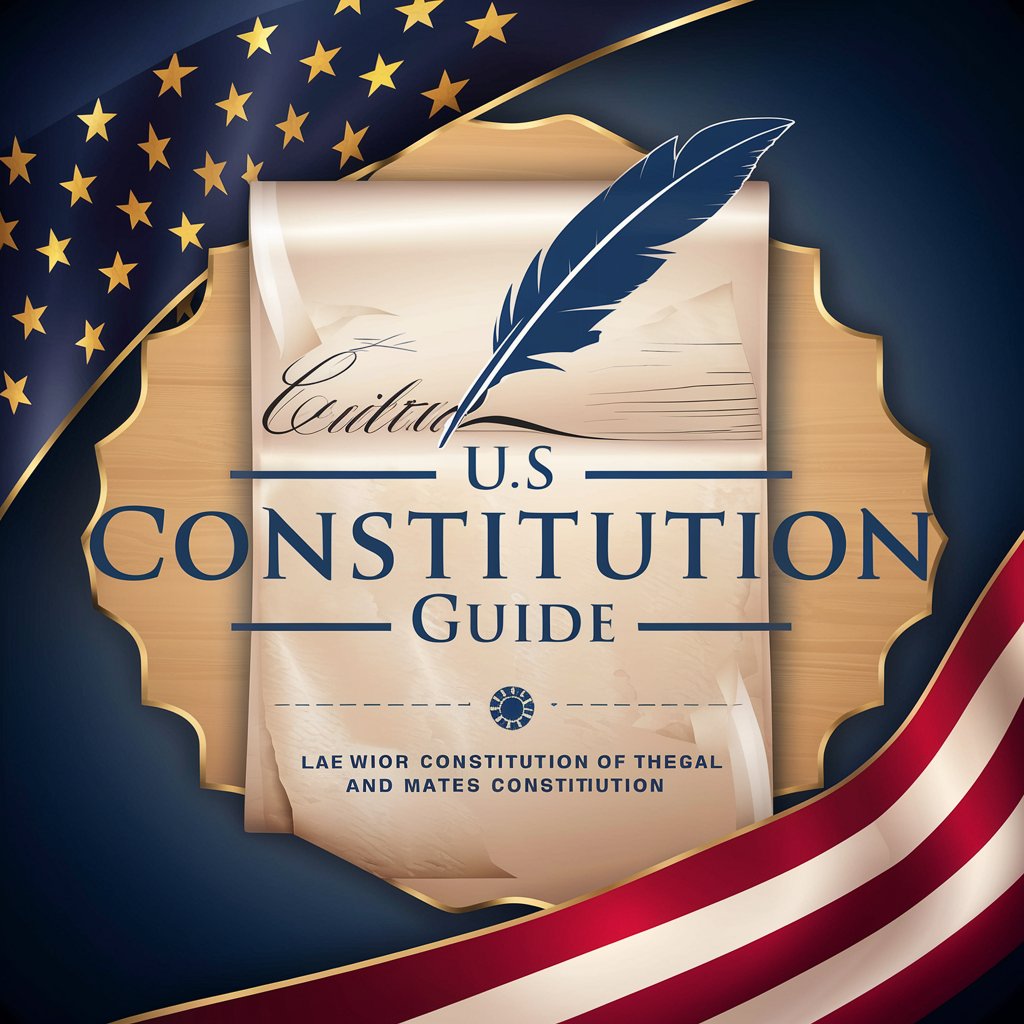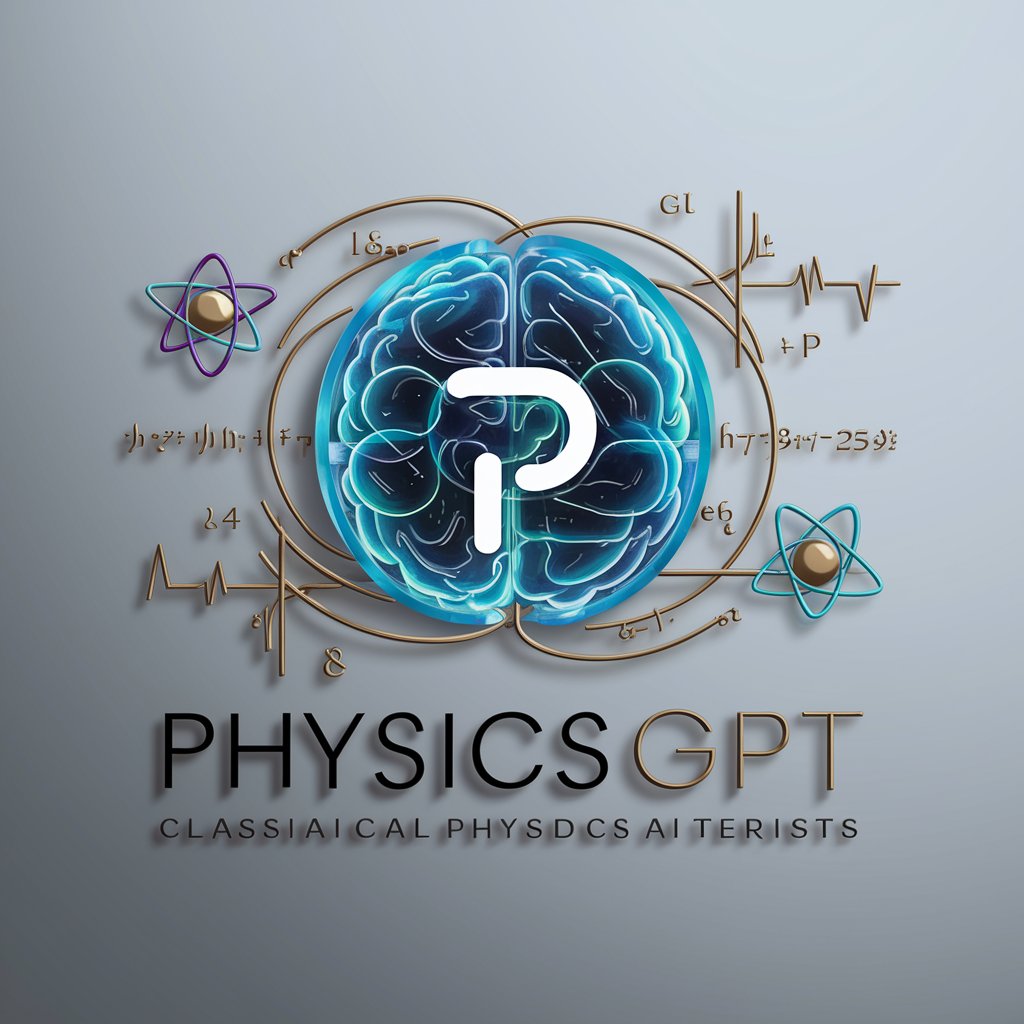US Constitution Guide - Detailed Constitutional Insights

Welcome to the US Constitution Guide.
Empowering Constitutional Understanding with AI
Explain the significance of the Bill of Rights.
What are the key powers granted to Congress in Article I?
How does the Constitution define the role of the President?
Describe the process for amending the Constitution.
Get Embed Code
Overview of US Constitution Guide
US Constitution Guide is designed as an expert assistant for understanding the Constitution of the United States, including its Amendments. Its primary purpose is to offer detailed explanations, historical context, factual interpretations, and legal language clarification of the U.S. Constitution. Through a structured and clear presentation, it helps users navigate the complexities of the Constitution, from basic summaries to advanced legal analysis. For example, a user curious about the implications of the First Amendment can receive a comprehensive breakdown of its historical background, its legal interpretations over time, and its impact on current law and society. Another scenario could involve a student seeking to understand the checks and balances system; the guide would provide an in-depth analysis of how the Constitution designs the separation of powers among the legislative, executive, and judicial branches. Powered by ChatGPT-4o。

Key Functions of US Constitution Guide
Detailed Explanations and Historical Context
Example
Explaining the evolution of the Second Amendment and its relevance to contemporary debates on gun control.
Scenario
A policy analyst researching gun legislation history uses the guide to understand the Second Amendment's historical context and how it has been interpreted by the courts over time.
Legal Language Clarification
Example
Translating the legal jargon of Article I, Section 8, Clause 18 (the Necessary and Proper Clause) into understandable terms.
Scenario
A high school teacher preparing a civics lesson on federal powers uses the guide to explain the Necessary and Proper Clause's significance in expanding congressional authority in an accessible way.
Interactive Discussion on Amendments
Example
Facilitating an interactive discussion on the implications of the 19th Amendment for women's rights.
Scenario
A women's studies class uses the guide to explore the 19th Amendment's history, its struggle for ratification, and its impact on women's suffrage and contemporary gender equality issues.
Fact Focus on Constitutional Principles
Example
Providing factual information on the principle of judicial review established by Marbury v. Madison.
Scenario
A law student uses the guide to delve into the case of Marbury v. Madison to understand how it established the principle of judicial review and its importance in the American legal system.
Target User Groups for US Constitution Guide
Students and Educators
Students from high school to university level, along with educators in history, political science, and law, would benefit from the guide's comprehensive explanations and historical contexts to enhance their learning and teaching materials.
Legal Professionals
Lawyers, paralegals, and law students seeking to deepen their understanding of constitutional law or find clear explanations of legal precedents and articles would find this guide invaluable for both study and practice.
Policy Analysts and Researchers
Individuals working in policy analysis, think tanks, or research organizations would use the guide to understand the constitutional underpinnings of current legislative debates and historical policy changes.
Civically Engaged Citizens
Individuals seeking to better understand their rights, the scope of government powers, and the constitutional rationale behind current events and legal decisions would find the guide a reliable resource for informed citizenship.

How to Use US Constitution Guide
1
Begin by visiting yeschat.ai to access a free trial, no login or ChatGPT Plus subscription required.
2
Choose the US Constitution Guide from the list of available GPTs to start exploring specific constitutional queries.
3
Input your question related to the US Constitution directly into the interface. Be as specific as possible for the best results.
4
Review the provided answer, which includes references to constitutional articles, amendments, and historical context for comprehensive understanding.
5
Utilize the feedback option to refine your query or ask follow-up questions for deeper insight into the US Constitution.
Try other advanced and practical GPTs
Keyword Research - Question Method
Uncover Insights with AI-Powered Questions

Steak
Master the Art of Steak Cooking

Pet Naming Expert
Crafting Perfect Names with AI

Pet Rescue
Empowering Pet Rescues with AI

Wife and Kids Simulator
Experience family life through AI

PhysicsGPT
Empowering physics learning with AI

Desire Slaps
Inspiring Creativity with AI-Powered Insights

Pensy AI - The Vision Board Creator
Visualize Dreams, Power Your Goals

Eye Care
Empowering vision care with AI

Vision
Empowering Your Vision with AI

Lexideck Covenant of the Arcane RPG
Craft, explore, and live your fantasy.

地理智囊团
Elevate Your Geography Skills with AI

Detailed Q&A about US Constitution Guide
What makes US Constitution Guide different from general search engines?
Unlike general search engines that offer broad results, US Constitution Guide focuses specifically on the US Constitution, providing detailed explanations, historical context, and interpretations directly relevant to your query.
Can US Constitution Guide help with understanding complex legal language?
Yes, it is designed to translate complex legal jargon into accessible terms, making the intricate aspects of the Constitution understandable to users without a legal background.
Is historical context provided for constitutional amendments?
Absolutely, the guide offers historical insights for each part of the Constitution and its amendments, explaining the circumstances and changes that led to their adoption.
How can educators use US Constitution Guide in their curriculum?
Educators can use it to create lesson plans, provide students with direct access to detailed constitutional analyses, and facilitate interactive discussions on constitutional principles and their application over time.
Can US Constitution Guide assist in legal research?
Yes, while it's not a substitute for professional legal advice, it can serve as an invaluable resource for preliminary legal research, offering insights into constitutional clauses and precedents.
